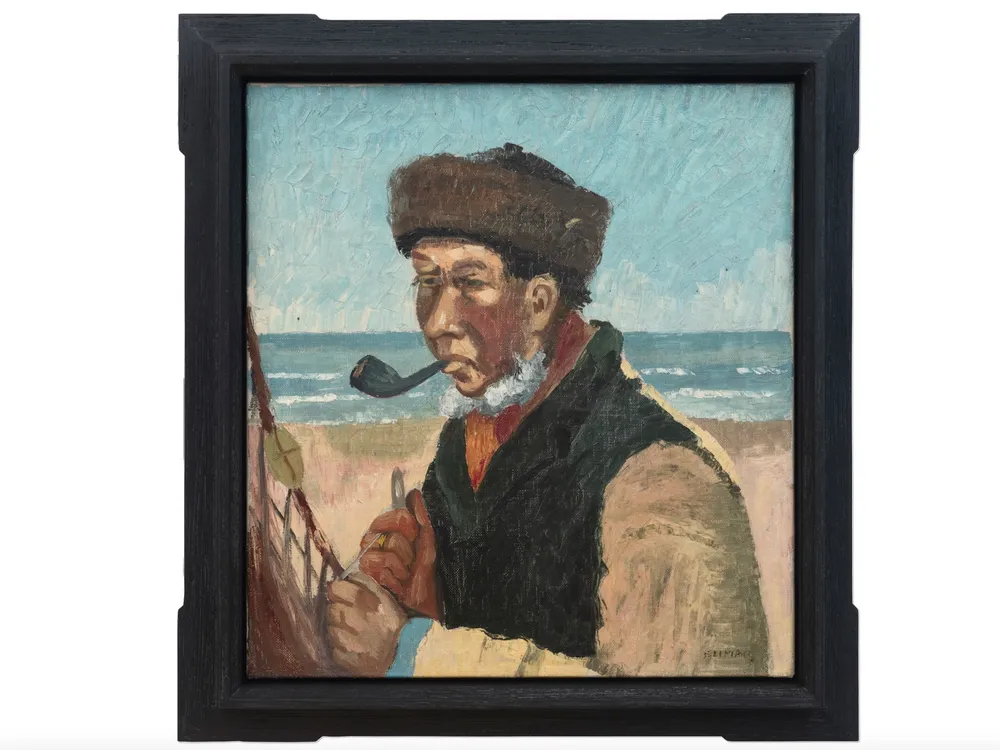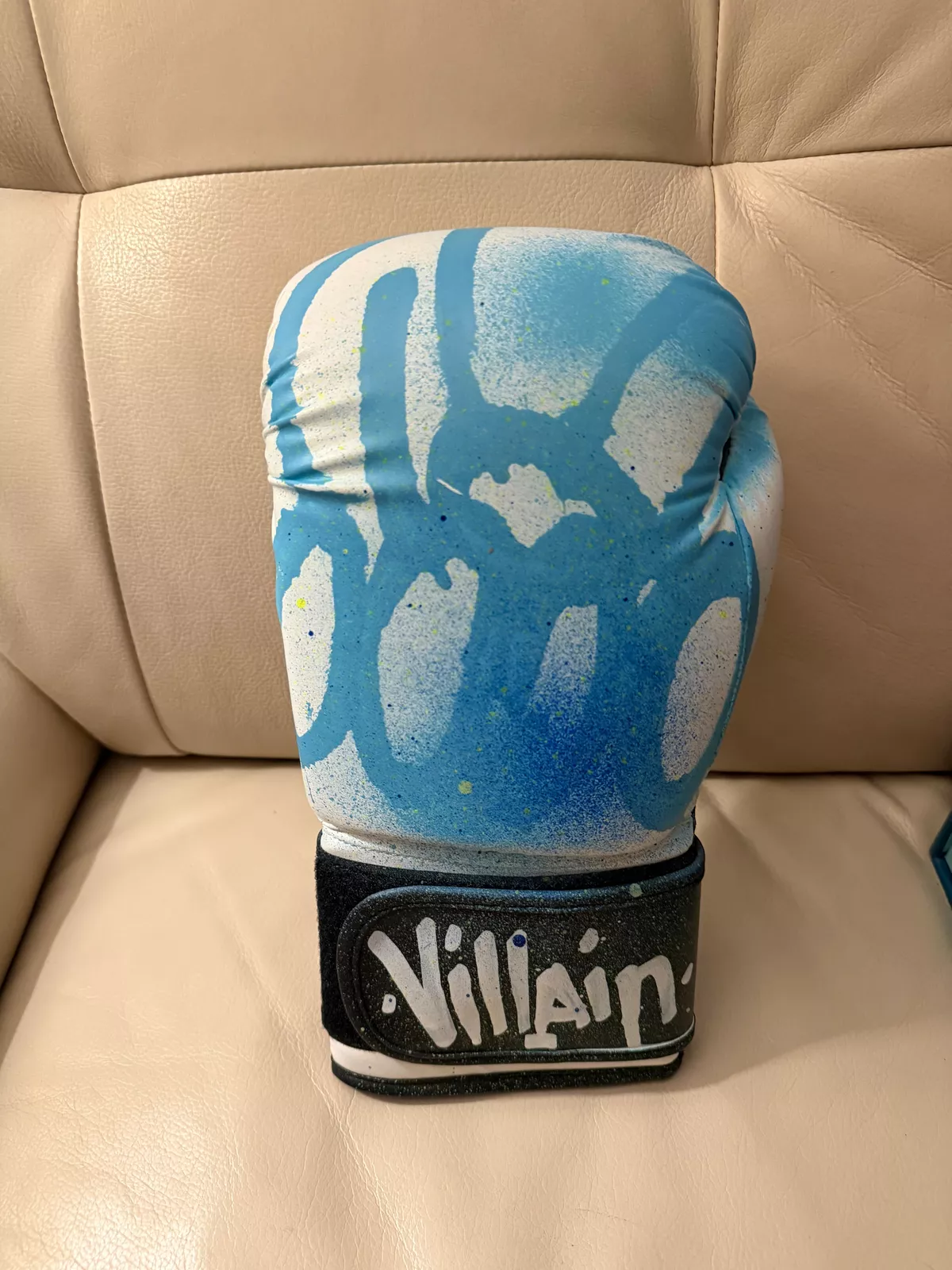A Serendipitous Discovery
Art enthusiasts dream of stumbling upon a priceless masterpiece in the most unexpected places. For one lucky collector in Minnesota, that dream became reality. A seemingly ordinary portrait of a fisherman, purchased for just $50 at a garage sale, has now been identified as a potential lost work by Vincent van Gogh, carrying an estimated value of $15 million. Experts and art historians are abuzz with excitement over the possibility that this unassuming canvas could be a missing piece of the Dutch master’s legacy.
The anonymous buyer, a longtime collector with an eye for unusual pieces, had no idea of the painting’s true origins when they acquired it. However, after noticing the brushwork and color palette bore striking similarities to Van Gogh’s style, they decided to consult art experts. What followed was a months-long investigation involving infrared imaging, pigment analysis, and provenance research, leading experts to conclude that this painting could, in fact, be an authentic work of the iconic artist.
The Painting’s Journey: From Obscurity to Fame
How did a potential Van Gogh masterpiece end up at a garage sale in Minnesota? That’s the mystery art historians are now trying to unravel. The painting, believed to be from Van Gogh’s early years, may have passed through multiple owners over the decades, its origins obscured by time and changing hands.
The seller, an elderly woman, had inherited the piece from her late grandfather, who was an art enthusiast but had no recorded ties to any major collections. According to family lore, the painting had been in their possession for generations, stored away in an attic for years before being rediscovered. Not knowing its potential value, she decided to sell it along with other household items in a routine garage sale.
Expert Analysis and Authentication
Once the new owner suspected that the painting might be significant, they reached out to the Van Gogh Museum in Amsterdam, one of the leading authorities on the artist’s work. Several experts conducted a thorough examination, using advanced technology and forensic techniques to assess its authenticity.
Key Factors Supporting Its Authenticity:
Brushwork and Technique – Van Gogh was known for his dynamic, expressive brushstrokes and bold use of color. Infrared scans revealed multiple layers of paint, consistent with his working style.
Pigment Analysis – The pigments used in the painting were compared to those known to have been used by Van Gogh. The results showed a close match, particularly in the use of lead-based yellows and cobalt blue.
Canvas and Materials – The painting’s canvas and stretcher bars were examined and found to be from the late 19th century, aligning with the materials Van Gogh used during his career.
Provenance Research – Though the painting’s history remains somewhat obscure, researchers traced its possible connection to Van Gogh’s time in the Netherlands. Some experts speculate that it may have been an unfinished study or a gift given to a friend before disappearing from record.
Dr. Anne Weber, an art historian specializing in post-impressionist works, remarked, “Every element we’ve analyzed so far points to this being a genuine Van Gogh. If proven, it would be a monumental discovery.”
The Portrait of a Fisherman: A Missing Link in Van Gogh’s Work?
If authenticated, the painting—tentatively titled Portrait of a Fisherman—could represent an important missing piece in Van Gogh’s artistic development. Scholars believe it may have been painted during his early years in the Netherlands, before he moved to France and developed his signature style.
Van Gogh had a fascination with laborers and working-class individuals, frequently depicting farmers, weavers, and fishermen in his early works. This painting, characterized by deep, moody hues and an expressive rendering of the fisherman’s weathered face, aligns closely with the artist’s early thematic focus.
The closest known comparison is Van Gogh’s Head of a Peasant (1885), part of his The Potato Eaters series. The similarities in subject matter and technique strengthen the argument for authenticity. If this painting is indeed a lost Van Gogh, it would add to our understanding of his early artistic explorations.
The Road to Official Recognition
While the expert consensus leans toward the painting being genuine, official authentication by the Van Gogh Museum or other leading institutions is the next step. This process can take months or even years, requiring extensive documentation, peer review, and scientific testing.
If fully authenticated, the painting could be added to Van Gogh’s catalog raisonné, the official list of his works. It would then likely be placed in a prestigious museum or sold at auction, where it could fetch a staggering sum—potentially over $15 million.
The Impression on the Art World
A newly discovered Van Gogh is an extraordinary event in the art world. It not only enhances our understanding of his oeuvre but also generates excitement among collectors, scholars, and museum-goers alike.
Art historian Dr. Richard Coleman noted, “Every time a new Van Gogh emerges, it changes the landscape of art history. His works are so deeply studied that even a single new discovery can reshape our perception of his career.”
The discovery has also sparked a renewed interest in hidden masterpieces. Stories of lost or misattributed artworks continue to capture the public’s imagination, proving that treasures can still be found in the most unexpected places.
The Mystery Remains
Despite the strong evidence supporting its authenticity, questions still linger. Who originally owned the painting? How did it end up in Minnesota? Could it be a forgotten work left behind after Van Gogh’s passing, or perhaps a study that never made it into his well-documented collections?
Researchers are now working to trace the painting’s full provenance, digging through archives and historical records to connect the dots. If a clear lineage can be established linking it to Van Gogh’s known works, it will further solidify its status as an authentic piece.
The Final Verdict
For now, the painting remains under expert review, but the initial findings are overwhelmingly positive. Whether it ends up in a major museum or a private collection, Portrait of a Fisherman may soon be recognized as one of the most exciting art discoveries of the century.
One thing is certain—what was once a humble garage sale purchase could soon take its place among the masterpieces of one of history’s greatest artists. And for the lucky buyer who spent just $50, it’s the ultimate collector’s dream come true.
No comments yet.








